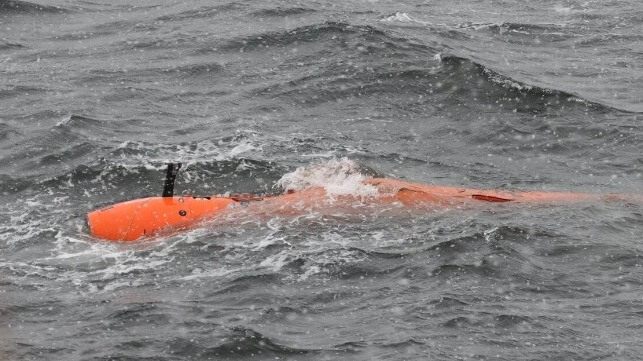University of Gothenburg AUV Goes Missing Under Antarctic Ice Shelf

In a blow to research in West Antarctica, Sweden’s University of Gothenburg is reporting that it has lost an unmanned underwater vehicle (AUV) under a glacier in the region. The vehicle, owned by the university, was one of a small number of units in the world that have the unique capabilities needed to operate beneath the unstable Thwaites Glacier, also commonly referred to as the “Doomsday Glacier.”
The seven-meter long AUV - called Ran - disappeared last weekend during an expedition with the South Korean icebreaker Araon. The AUV was part of a project led by Professor Anna Wåhlin, one of the six participants from University of Gothenburg on board the icebreaker.
“This was the second time we took Ran to Thwaites Glacier to document the area under the ice. Thanks to Ran, we became the first scientists in the world to enter Thwaites in 2019, and during the current expedition we have visited the area again. Even if you see melting and movements in the ice from satellite data, from Ran we got close-ups of the underside of the ice,” said Prof. Wåhlin.
With scientists increasingly mapping the impacts of climate change in the polar regions, melting glaciers and ice sheets have become a primary concern. Most studies are trying to focus on the nexus between ice loss and sea level rise, which could be detrimental to ecosystems far away from polar regions.
According to recent polar studies, the Antarctic ice sheet contains enough ice to raise global sea-levels by about 58 meters (190 ft) if melted entirely. Most of this ice is held in East Antarctica, which is relatively stable.
However, a sizeable portion is held in West Antarctica, which is considered less stable and has been losing mass in the past decade. This poses a threat of raising sea-levels by around five meters (16ft). Much of the ice-loss has been recorded within the Thwaites Glacier, which flows into Amundsen Sea in West Antarctica. The glacier is considered highly vulnerable to warming being recorded in the Antarctica.
If the Thwaites Glacier collapses entirely, scientists project that it would raise global sea levels by around 65 cm (25 inches).
It is for this reason that Ran’s measurements received a lot of attention, and not only among polar scientists.
During its dives under the 200-500 meter thick ice, Ran did not have continuous contact with the research vessel. Its route was always programmed in advance, and thanks to its advanced navigation system, Ran could find its way back to the open water.
Last month, Ran completed several successful dives under Thwaites. Unfortunately, during the last planned dive of the expedition, something went wrong. The AUV did not appear at the programmed rendezvous point, and after an extensive search, Ran was declared lost.
The AUV – based on Kongsberg’s ubiquitous HUGIN platform - was financed with $3 million from the Knut and Alice Wallenberg Foundation in 2015. Wåhlin notes that the university team got five years of service and 10 research missions out of the AUV, and that the importance of the study made it worth the risk to the equipment.
“Our aim is to replace Ran. We will be looking for a financier to cover the deductions made by the insurance company and the price increase that has occurred over the years,” says Anna Wåhlin.
No comments:
Post a Comment